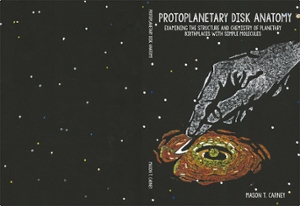Proefschrift
Protoplanetary disk anatomy: examining the structure and chemistry of planetary birthplaces with simple molecules
This thesis examines the link between simple molecules and the underlying structure and chemistry within protoplanetary disks - the birthplaces of planets.
- Auteur
- Carney, M.
- Datum
- 06 december 2018
- Links
- Thesis in Leiden Repository

This thesis examines the link between simple molecules and the underlying structure and chemistry within protoplanetary disks - the birthplaces of planets. The chapters describe the analysis and interpretation of data obtained with the Atacama Large Millimeter/submillimeter Array (ALMA) interferometer, primarily in two disks around the young stars HD 163296 and HD 169142. Observations of dust and molecular gas probe the relationship between the dust structure, the gas distribution, and the chemical processes that give rise to the gaseous species. In the disk around HD 169142, substructure in the millimeter dust and carbon monoxide gas strongly suggests the presence of giant planets sweeping up disk material. Meanwhile, molecular ions reveal previously hidden structure in the gas deep within the disk beyond the millimeter dust edge. In the disk around HD 163296, carbon monoxide and the simple organic molecule formaldehyde show radial variation connected to the millimeter dust edge. The organic molecule methanol is not detected in the disk, suggesting differences in the production of formaldehyde and methanol. This thesis concludes that the distribution of simple molecules is connected to the dust size distribution in disks, while more complex molecules remain elusive but can still provide constraints on disk chemistry.
